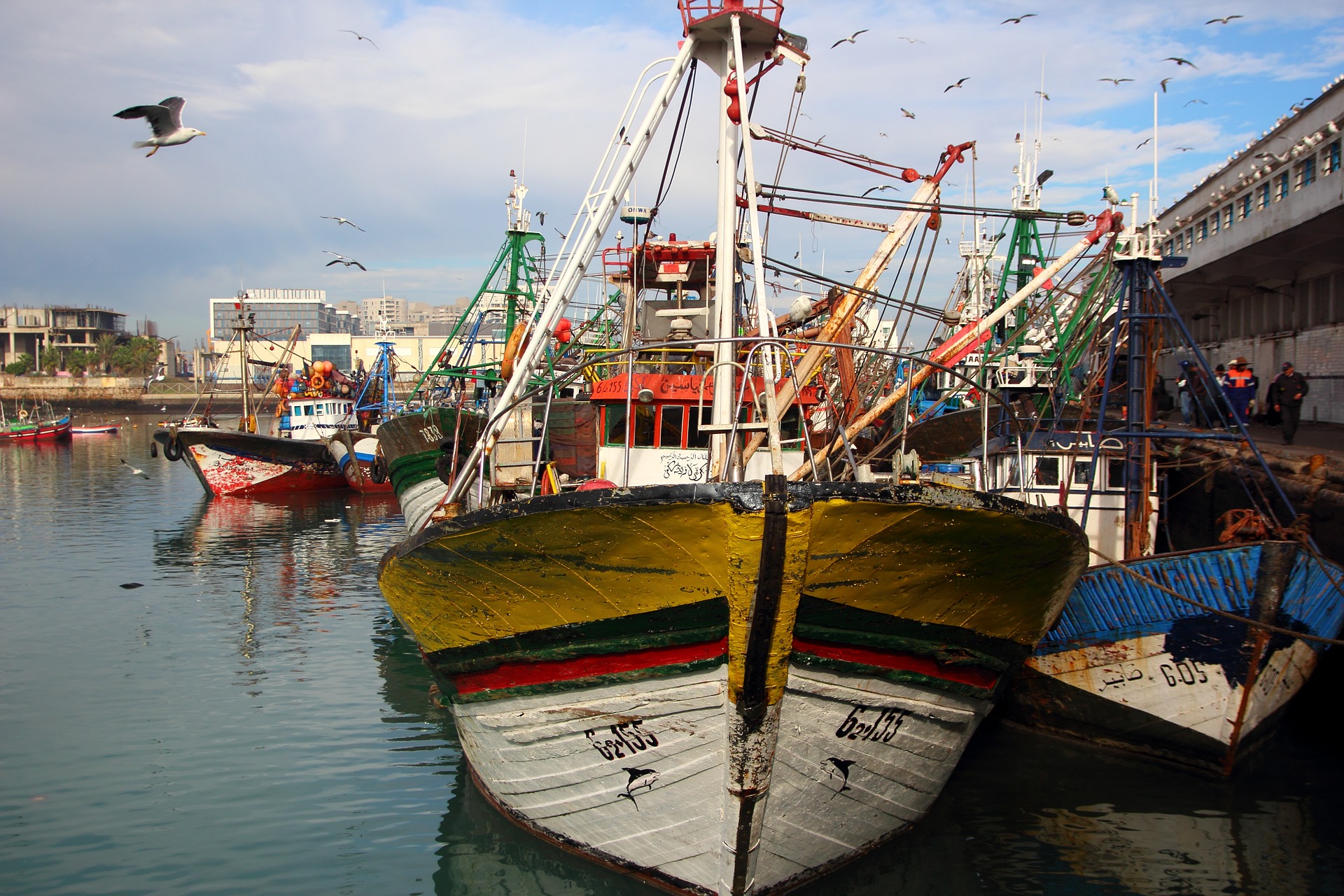Although the capital of the Alaouite kingdom is Rabat, some 80 kilometres to the north, the country’s life, especially economic, industrial and social life, does not pass through its streets but through those of Casablanca, which, for many, is only a pleasant memory of the magnificent film directed by Michael Curtiz and starring Humphrey Bogart and Ingrid Bergman, which, however, was not shot in these lands.
To break the myths, Casablanca has managed to combine a complete and varied tourist offer that will satisfy all its tourists.
One of the places that should not be missed on a visit to Casablanca is the great Hassan II mosque, located on a peninsula of about eight hectares, much of it reclaimed from the sea. The building, which was built in the 20th century (it was inaugurated on 30 August 1993), has the honour of having the highest minaret in the world (210 metres), which makes it visible from far away, although this quality is reinforced by the laser which, in the direction of Mecca, can be seen from 30 kilometres away.
Its prayer room has a capacity for 25,000 worshippers, while the esplanade holds 80,000 more, making it one of the busiest in the world, also for non-Muslims who can enter at times outside of worship (entrance for adults costs 100-120 dirhams, about 10 euros).
The Hassan II mosque, which is very close to the leather souk where you can buy local crafts, is the result of a mixture of traditional Moroccan architecture, which is not at odds with the latest technology. For example, the interior is topped by a cedar wood roof supported by 76 pillars, which, however, can be opened up to let light into the courtyard pond.
The inspiration is clearly different from that of the great Hassan II mosque: the cathedral of the Sacred Heart, also known as the cathedral of Casablanca, which has not held mass since 1956, after Morocco gained its independence. Built in 1930 in a neo-Gothic style, it is now a cultural centre worth visiting.
It was at this time that many of the art deco buildings in the fashionable quarter of the early 20th century were erected. However, it now boasts that special, romantic decadence that continues to charm many who decide to stroll through its streets. In this neighbourhood, which extends to the east of the medina, the Arab League park planted in 1918, the Villa of the Arts with a 2,500 square metre garden and temporary exhibitions by contemporary Moroccan artists, or the Mohammed V square where the 1937 Prefecture or Wilaya is located, stand out.
Restoration work has revitalised its wooden coffered ceilings, colourful mosaics and leather adornments, which complete a splendid triple central courtyard with a tropical garden.
Another area of Casablanca where tourists can enjoy a pleasant walk is the old medina, whose walls were rebuilt in 1770 by Sultan Mohammed Ben Abdallah. One of the most charismatic places is Sgala, an old bastion converted into a restaurant that offers an impressive view of the medina and its port. The El Hank lighthouse built in 1920, the lively Comedy Square, the Sidi Kairouani Sanctuary or Bab El Mersa, a monumental gateway that bids farewell to visitors to the medina, are also noteworthy in the old medina.
Less conspicuous is the new medina, although there are many craft shops here, so those who wish to buy a gift have their place in the Habous district, in the south of the city. Those who come here should not miss the mahkama of the pasha, a Spanish-Moorish style building built entirely of marble and wood, which served as a Muslim court.
Casablanca is also shopping, luxury and leisure. The shops in the Mâarif district are well aware of this, a formerly very humble area that has been reinvented to house luxury shops from international firms, including the Twin Center towers.
Before being seen in this glamorous area, many people stroll along the welcoming beaches of Casablanca, the artificial swimming pools with sea water or the terraces of the many cafés. Just over 20 kilometres away is the fashionable spa resort of Mohammedia with a marina, several luxury hotels, discos and a golf course (there are three more in Casablanca). Anfa Royal Golf Club, Settat University Royal Golf Club and Bouznika Bay, which is lit up at night).
As a big city, getting around Casablanca can be very chaotic and nerve-wracking. The avenues are usually congested with cars, although there are several alternatives for public transport: red metered taxis, buses, trams, metro and suburban trains. In addition, it has the most important airfield of all the Maghreb, the international airport Mohammed V, located to 30 kilometers of the center of the city.
Casablanca, whose population is around five million with the suburbs, is a good lesson that modernity and history are not at odds.
